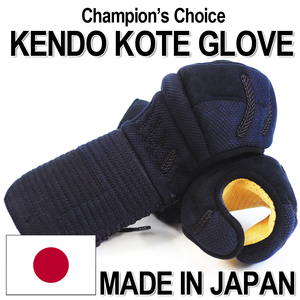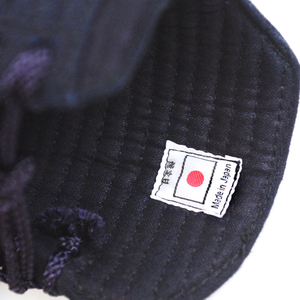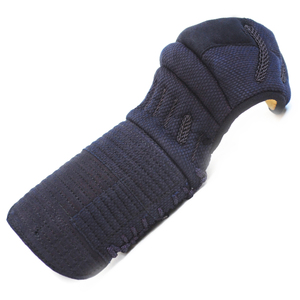(45 products available)















































































































































































































































Kendo budo is a highly disciplined martial art that has various forms. Here are the major types:
Kendo
Kendo is the most popular and widely practiced form of Kendo budo. It involves combat with bamboo swords (shinai) while wearing protective armor (bogu). Kendo focuses on strikes to designated points such as the head, wrists, and body. It emphasizes developing a strong spirit, precise technique, and mental toughness. Practitioners engage in sparring (jige) and practice various strikes (waza) and defensive movements (nuki).
Naginata-do
Naginata-do is a martial art that uses a naginata, a pole weapon with a curved blade. It combines techniques of both long and short weapons. Naginata-do is known for its elegant and dynamic movements. It has a wide range of strikes, thrusts, and sweeps. Practitioners train in forms (kata) and engage in sparring. The focus is on developing precision, strength, and balance.
Iaido
Iaido is a discipline that centers on the act of drawing a sword (katana) from its scabbard (saya) and quickly responding to an imagined attack. Although it is not a combative practice, it highlights the art of swordsmanship. The practice of Iaido involves performing predetermined forms (kata) that incorporate drawing, cutting, and returning the sword to the scabbard. Concentration, smoothness, and exactness are crucial elements of Iaido. Moreover, practitioners concentrate on the mental and spiritual aspects of swordsmanship.
Jodo
Jodo is a martial art that involves a long staff (jo) against a sword (katana). It emphasizes strategy, timing, and distance management. Jodo practitioners train in forms (kata) that cover various encounters and techniques. They also engage in sparring (shiai). Jodo focuses on developing adaptability, control, and understanding of the opponent's intentions.
Shiai
Shiai refers to the competitive aspect of Kendo budo. Practitioners compete against each other in matches (shiai) to test their skills and techniques. Points are awarded for valid strikes, and the objective is to demonstrate superior technique and spirit. Shiai also involves mental strategy and sportsmanship.
Kendo budo is a martial art that has gained popularity worldwide. Its application extends beyond the training and practice of martial arts. Here are some of the usage scenarios of Kendo budo:
Physical Education
Kendo is commonly included in the curriculum of physical education classes in schools and universities. Students can participate in kendo competitions or practice it as an elective course. Kendo is also incorporated into training programs for physical education teachers, equipping them with the necessary skills to teach the sport effectively.
Mental Training
Kendo emphasizes mental discipline and focus. Many athletes from different sporting disciplines practice Kendo to enhance their concentration, decision-making, and competitive edge in their respective sports. Business professionals also train in Kendo to improve their mental fortitude and stress management skills.
Cultural Exchange
Kendo has a deep connection to Japanese culture and traditions. It serves as a medium for cultural exchange, allowing people from diverse backgrounds to explore and appreciate Japanese customs. Kendo tournaments and events often feature participants from various countries, fostering cultural understanding and connections.
Law Enforcement and Military Training
Kendo is used by some law enforcement agencies and military organizations as a form of weapon-based training. It enhances soldiers' and officers' discipline, focus, and combat skills, equipping them with the necessary tools to handle high-pressure situations.
Rehabilitation and Therapy
Kendo can be adapted for use in rehabilitation and therapy programs. It helps individuals recover physical strength, improve coordination, and gain confidence after injuries or surgeries. Kendo's structured training and emphasis on discipline can also benefit individuals with mental health challenges, providing them with a positive outlet for expression and personal development.
When choosing Kendo budo, one should consider the following.
Quality and durability
Business owners should get budo with high-quality materials. Such materials include cotton, leather, and synthetic fabrics. A good quality budo is comfortable to wear and can last for many years. Also, they should look for products with reinforced stitching. The stitching should be strong enough to withstand the demands of kendo practice and matches.
Size and customization
Kendo budo are available in different sizes. Business owners should get various sizes and let their customers choose what fits them. They can also order budo that can be customized to fit individual practitioners. Custom sizes will ensure comfort and mobility.
Protection and padding
Buyers should look for budo with sufficient padding and protection. The padding should be thick enough to protect the head, hands, and body without limiting movement. Effective padding will reduce the impact of strikes and injuries. More importantly, they should ensure that the padding is lightweight to enhance performance.
Ventilation and comfort
Kendo practice is intense and can be hot. Buyers should look for uniforms with breathable materials to keep the practitioners comfortable. The uniforms should have good ventilation to regulate body temperature. More importantly, the inner lining should be smooth to avoid irritation.
Compliance with regulations
In most cases, kendo competitions have rules and regulations on the type of budo that participants should wear. Buyers should get budo that complies with the requirements. Also, they should be aware of different competition standards.
Ease of maintenance
Lastly, business owners should choose budo that are easy to maintain and clean. Typically, most budo require regular cleaning. They should get uniforms that can be washed easily with minimum care requirements.
Kendo, a modern Japanese martial art, has specific functions, features, and designs that make it unique. Here's a breakdown:
Function
Kendo's primary function is to practice combat techniques and develop a person's mental and physical capabilities. Once mastered, these skills can be used in self-defense. Kendo practitioners use the techniques learned in a controlled environment to promote self-discipline, respect, and good sportsmanship. The goal is to train the mind and body to improve a person's character.
Features
Some of the basic features of Kendo include:
Shiai
This is a competitive practice where practitioners (known as kendoka) engage in a regulated match. Shiai helps to test the skills and techniques that have been learned. The goal is to score points by striking designated target areas with a shinai.
Keiko
This is training or practice sessions that focus on different techniques. During Keiko, practitioners train in various forms, such as Kata (forms) and Ji-geiko (free practice). The main feature of this training is to enhance skills, improve techniques and work on one's mental strength.
Meditation and Mindset
Kendo emphasizes the importance of meditation and mental discipline. This helps to reduce stress and improve concentration. Developing a strong mindset is as important as physical training in Kendo.
Philosophy
Kendo is governed by a code of conduct known as "Kendo no Kata." This code focuses on respect, etiquette, and the spirit of self-improvement. Kendoka must respect their opponents and teachers. Following the code of conduct helps to achieve the ultimate goal of Kendo, which is to develop a person's character.
Design
Kendo's design is highly detailed and ensures safety and effectiveness. Some aspects of Kendo's design include:
Bogu
Bogu refers to the protective gear that is worn during matches and practice. It is designed to protect the kendoka from strikes while allowing freedom of movement. Each piece of Bogu is carefully designed to provide both protection and mobility. For example, Men (headgear) protects the head and face while providing good visibility and Men (glove) protects the hands while allowing dexterity.
Shinai
It is a bamboo sword used in practice and matches. It is lightweight, balanced, and flexible, allowing kendoka to perform various techniques. The shinai's design mimics the weight and feel of a Katana (Japanese sword) making it easier for kendoka to transition from practice to competitions.
Dojo Design
The Design of Kendo Dojos (training halls) also plays a role in the art. Dojos provide a controlled and respectful environment for practice. They are outfitted with wooden floors and are marked with traditional Japanese calligraphy that depicts the values of Kendo. This provides a space that promotes discipline, focus, and respect for the Kendo art.
Q: What does the word "budō" mean?
A: The word "budō" refers to a martial art or a system of martial arts from Japan. The term is made up of two characters: "bu", which means military or martial, and "dō", which means way or path. In this context, "dō" implies that there is more to practice than just fighting techniques; it is about self-improvement and following a philosophical path. Therefore, "budō" can be seen as a means of cultivating discipline, character, and spirit in addition to physical skills.
Q: What is the difference between kendo and other budo?
A: Although Kendo shares some similarities with other forms of Budō, such as a focus on discipline and mental training, it has its own unique characteristics. The use of bamboo swords (Shinai) and protective gear (Bogu) distinguishes Kendo from martial arts like Karate or Judo, which use actual combat techniques or grappling methods, respectively. Kendo's emphasis on developing a strong spirit and character sets it apart from other sports, making it as much a philosophy of life as a physical activity.
Q: What is the main goal of Kendo?
A: The main goal of Kendo is to develop oneself via the practice of a martial art. Kendo practitioners learn discipline, respect, and perseverance, which helps them in their daily lives. While winning matches is significant, Kendo emphasizes the importance of character development and the spirit of the sport above mere victory.